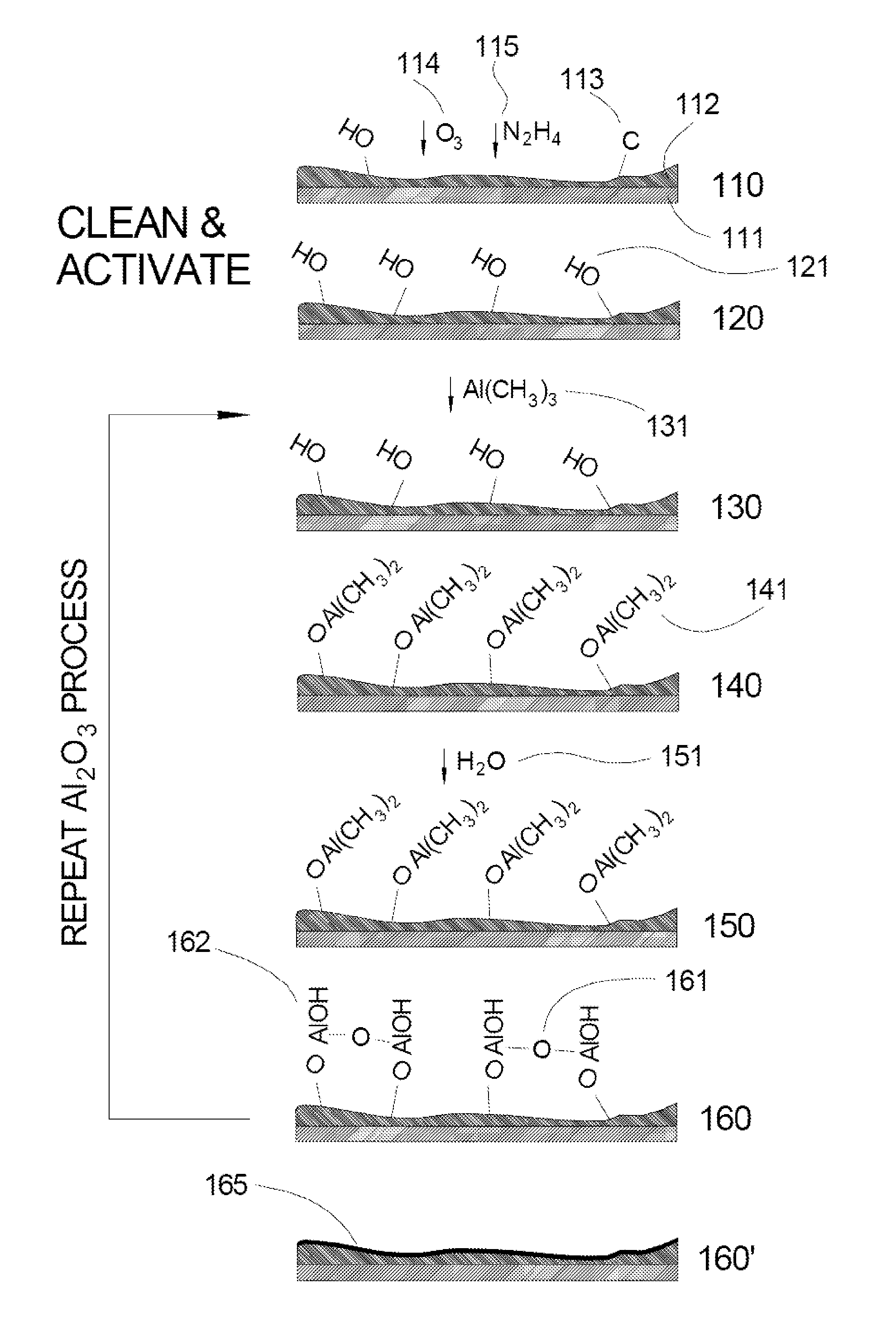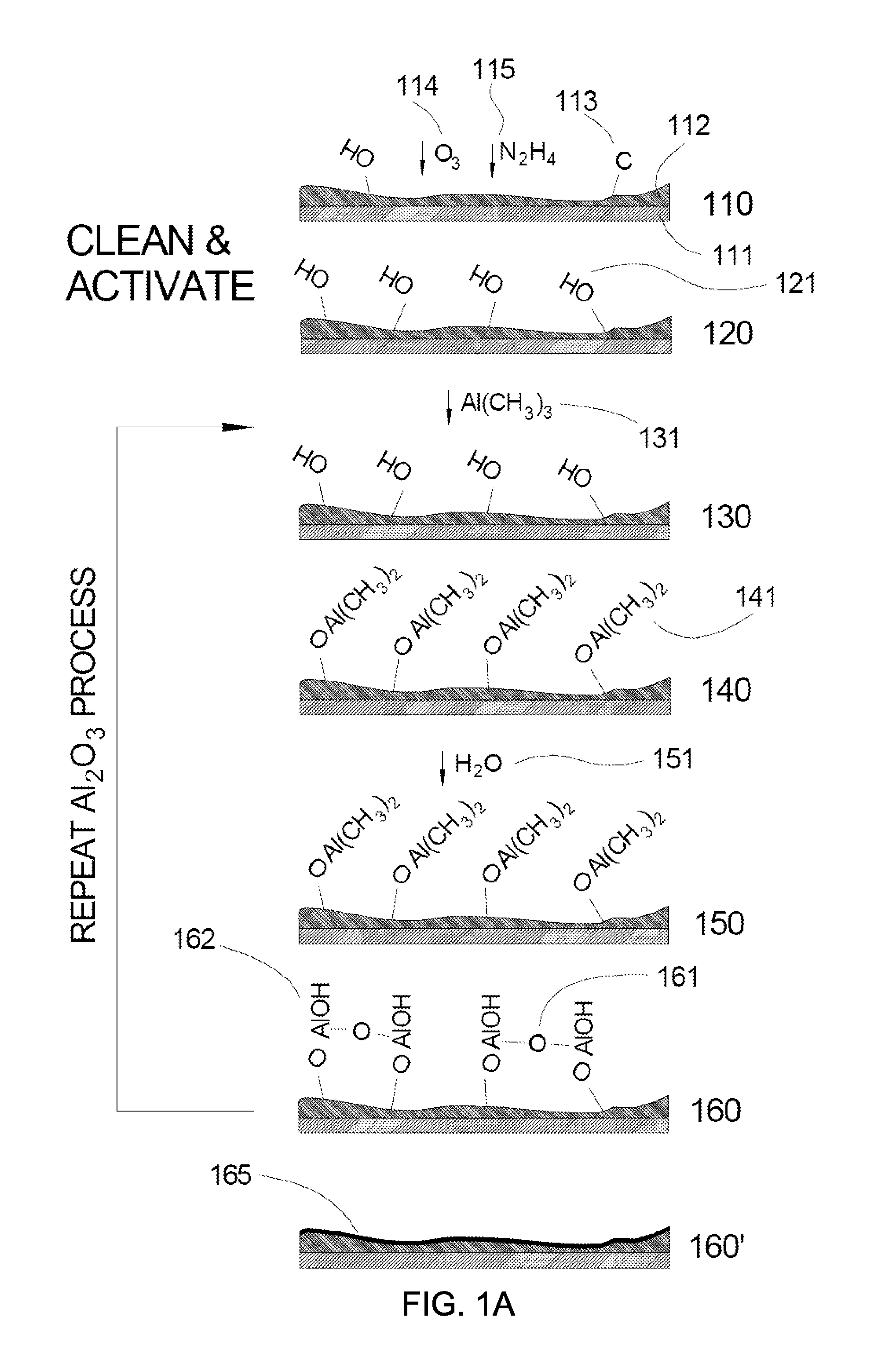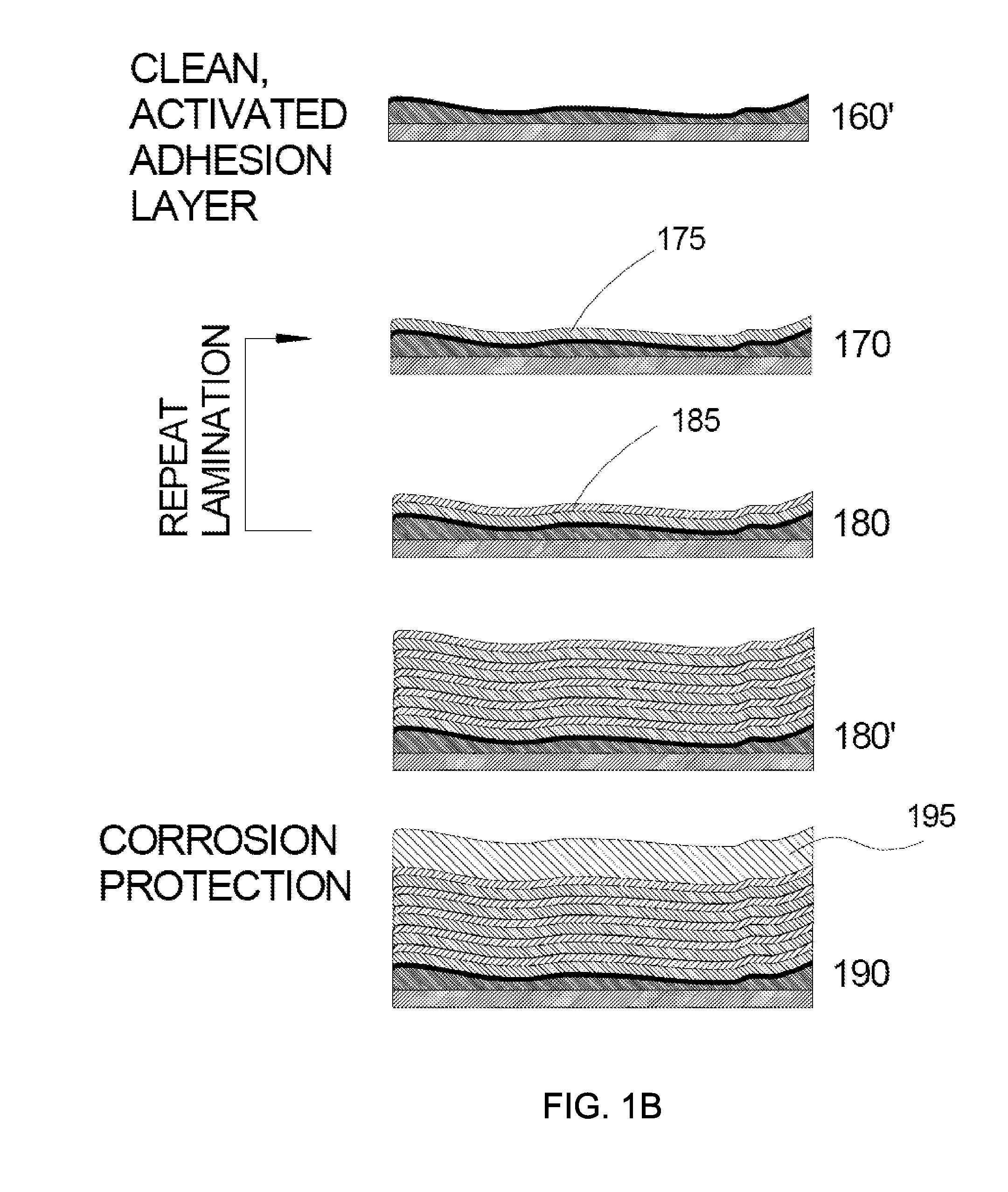Coatings for suppressing metallic whiskers
a technology of coatings and whiskers, applied in the field of suppressing can solve the problems of resurrecting the risks of tin-whisker driven electrical circuit failure, tin pest is a serious reliability problem, and the sub-millimeter pitch circuitry is much more prone to whisker-driven failure than its half-a-century-old prior predecessors, so as to suppress the growth of metallic whiskers, suppress the growth of whiskers, and suppress the growth of metallic whisk
- Summary
- Abstract
- Description
- Claims
- Application Information
AI Technical Summary
Benefits of technology
Problems solved by technology
Method used
Image
Examples
Embodiment Construction
[0026]The present invention will be described with reference to illustrative embodiments. For this reason, numerous modifications can be made to these embodiments and the results will still come within the scope of the invention. No limitations with respect to the specific embodiments described herein are intended or should be inferred.
[0027]As used herein, the term “metallic feature” is intended to encompass any structure or layer that is formed of metal. A metallic layer may therefore be disposed on another metallic object and still be defined as a separate metallic feature herein. As a result, the term “metallic feature” would include, as just a few examples, a tin finish that overlays a copper electrical trace on a printed circuit board (PCB), a tin finish that overlays a copper leadframe in an integrated circuit, a tin finish that overlays a copper electrical connector or pin, and a zinc finish that overlays a steel floor tile.
[0028]Embodiments in accordance with aspects of the...
PUM
| Property | Measurement | Unit |
|---|---|---|
| Pressure | aaaaa | aaaaa |
| Fraction | aaaaa | aaaaa |
| Adhesion strength | aaaaa | aaaaa |
Abstract
Description
Claims
Application Information
 Login to View More
Login to View More - R&D
- Intellectual Property
- Life Sciences
- Materials
- Tech Scout
- Unparalleled Data Quality
- Higher Quality Content
- 60% Fewer Hallucinations
Browse by: Latest US Patents, China's latest patents, Technical Efficacy Thesaurus, Application Domain, Technology Topic, Popular Technical Reports.
© 2025 PatSnap. All rights reserved.Legal|Privacy policy|Modern Slavery Act Transparency Statement|Sitemap|About US| Contact US: help@patsnap.com



